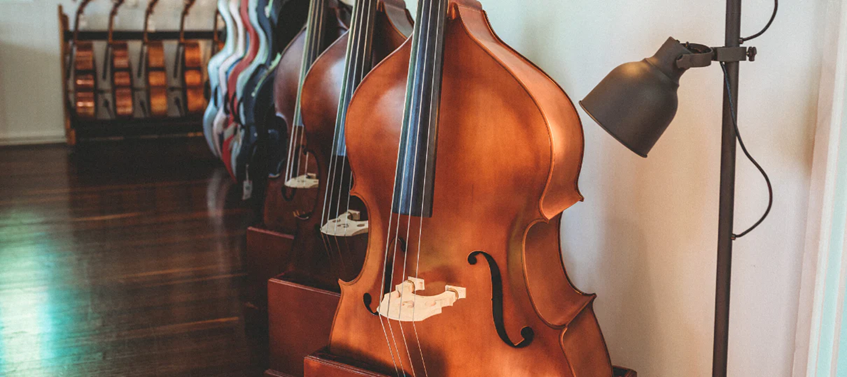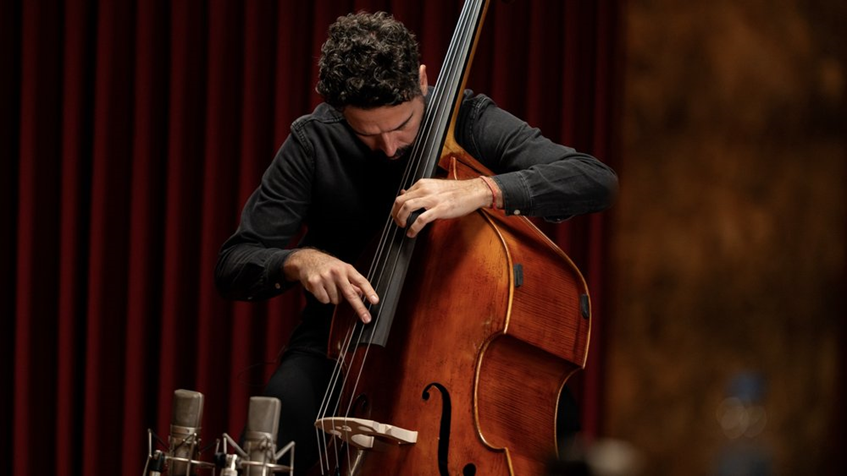
From Bow to Bassline: Double Bass Tips for Beginners
The double bass, tall, rich, and resonant, is the foundation of countless musical styles, from the soulful swing of jazz to the elegant depths of classical orchestras to the groove of contemporary genres. It’s an instrument that not only supports the music but breathes life into it with its deep, warm tones.
For those starting, the beginner double bass journey may feel overwhelming at first. Its size, technique, and sheer presence can seem intimidating. But don’t worry, every great bassist once stood exactly where you are. With the right mindset and guidance, learning the double bass can be an incredibly rewarding musical adventure.
Contents
Getting Started: The Instrument & Your Body

Choosing Your First Bass
When diving into the world of well-constructed beginners’ double bass models, your first decision is whether to rent or buy. Renting is ideal for those still exploring their interest in the instrument. It’s cost-effective and gives you time to grow before committing to a purchase. Buying, while more expensive upfront, can be a solid investment if you’re dedicated.
Size matters when choosing your bass. Double basses come in fractional sizes like 1/4, 1/2, 3/4, and full-size. Most adult beginners start with a 3/4 size, which offers a good balance of playability and sound projection. Try a few to find what feels right. Know your bass’s anatomy, from the scroll and neck to the body, bridge, strings, and endpin. Familiarity with these parts will help you better understand how the instrument functions and how to care for it.
Posture and Holding the Bass
Whether you stand or sit, your position should be comfortable, balanced, and tension-free. The double bass should rest securely against your body, angled slightly to the right. Keep your shoulders relaxed and avoid slouching or leaning. A good posture ensures better sound production and prevents injury.
Basic Equipment Essentials
Your gear can make a big difference:
- Bow: Choose between a French (overhand grip) or German (underhand grip) bow. Try both if you can, and go with what feels more natural.
- Rosin: This sticky substance gives your bow grip, enabling sound production. Apply a little before each practice session.
- Endpin: Adjust this metal rod at the bottom of the bass to the right height. Your bass’s scroll should be roughly at eye level when you’re standing.
- Tuner: A clip-on electronic tuner is an essential companion for any beginner double bass player, ensuring you’re always in tune.
The Art of Bowing: Creating Your Voice
The Bow Hold (French and German)
Your bow hold is foundational. A relaxed grip allows for flexibility and tone control. In a French grip, fingers curl gently over the stick, with the thumb underneath. The German grip uses a handshake-like position, with the bow resting between the thumb and fingers. Whichever you choose, keep your wrist flexible and avoid tension.
Basic Bow Strokes
- Détaché: Separate, even strokes, perfect for beginners learning control.
- Legato: Smooth, connected strokes for a flowing sound.
- Experiment with dynamics like piano (soft) and forte (loud) to explore expressive possibilities.
Achieving a Good Tone
Your sound depends on bow speed, pressure, and placement. Aim for the “sweet spot” between the bridge and fingerboard. Too close to the bridge? It’ll sound scratchy. Too far? The tone may be weak. Start simple. Practice on open strings, focusing on tone consistency. Then move to basic scales, combining bowing with left-hand coordination.
Finding Your Notes
Understanding the Fingerboard Layout
Your four open strings are E, A, D, and G, from lowest to highest. Learning to navigate the fingerboard means understanding half steps (one fret space) and whole steps (two fret spaces), which form the basis of scales and melodies.
Left-Hand Technique
Keep your fingers curved and apply even pressure to produce clear tones. Over time, you’ll build the strength and dexterity needed for faster passages. Importantly, stay relaxed, tension hampers movement and intonation.
Basic Scales and Exercises
Practice major scales like G, D, and A to train your ear and muscle memory. Scales reinforce finger patterns, pitch accuracy, and coordination.
Introduction to Harmonics
Lightly touching specific points on the string can create natural harmonics, and beautiful, bell-like tones. These sound great and help train your ear and improve your intonation.
Tuning Your Bass
Using an Electronic Tuner
Clip your tuner to the scroll. Pluck or bow each string and adjust the tuning pegs until the pitch matches E, A, D, or G. Move slowly, small turns make a big difference.
Tuning by Ear (Relative Tuning)
Once one string is in tune, you can tune the others by playing perfect fourths (the interval between strings). Listen carefully and adjust until the pitches blend smoothly.
Understanding Pitch Tendencies
Temperature, humidity, and playing can affect your tuning. Get into the habit of checking your tuning regularly, especially before practice or performances.
Deep Notes, Deep Rewards

Learning the double bass is a journey of patience, discovery, and joy. From the first scratchy notes to your first song, every step builds your connection with this magnificent instrument. As a beginners double bass student, remember that progress takes time, but the rewards are immense. Make sure to keep practising, stay curious, and enjoy the journey, because behind every low note is a deep sense of fulfilment waiting to be played.


Sorry, the comment form is closed at this time.